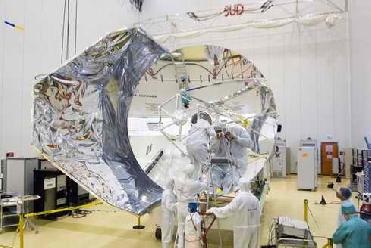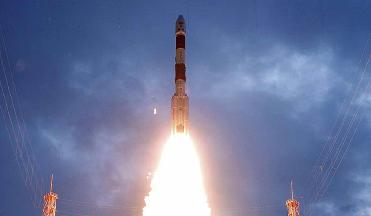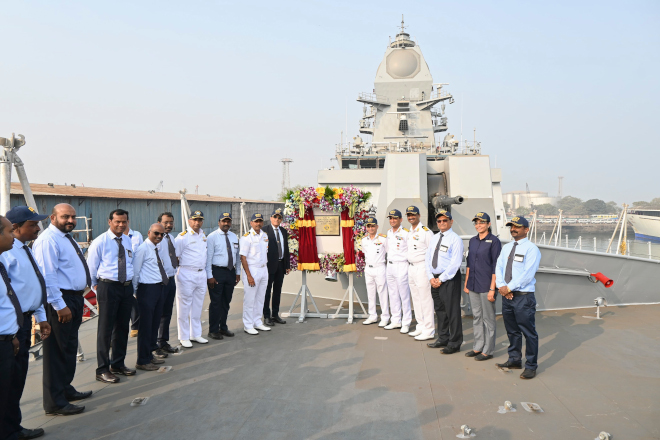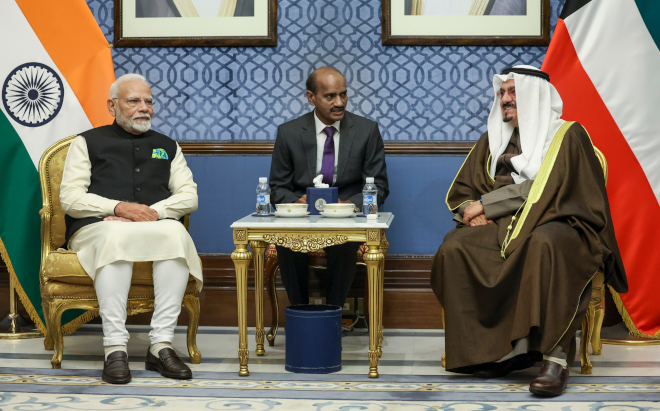
Herschel space telescope's 3.5-meter diameter mirror undergoes its cleaning process at the Spaceport. Arianespace photo
PARIS (BNS): With a liftoff mass of 3,300 kg., Herschel will be the largest space telescope of its kind ever launched. Its ability to detect space radiation at far infrared and sub-millimeter wavelengths will help scientists determine how the first galaxies were formed, and how they evolved into their present-day form.
According to scientists, Herschel’s mirror will collect long-wavelength infrared radiation from some of the coolest and most distant objects in the universe.
The European-built Herschel telescope has begun pre-launch processing at the Spaceport in French Guiana as preparations for Arianespace’s second Ariane 5 launch of 2009 have started in full gear.
Herschel will be part of a dual payload for the next Ariane 5 mission, which is set for April 16. It will be joined by the European Space Agency’s Planck spacecraft, which is scheduled to arrive in Kourou later this week. Both satellites were built by Thales Alenia Space.
Scientists said that the 1,800-kg. Planck will analyse radiation remnants that filled the universe immediately after the Big Bang, which are observed today as the Cosmic Microwave Background. Data from Planck will provide answers on the universe’s first moments, and how it is expected to develop in the future. Scientists have dubbed Planck as the European Space Agency’s “time machine.”
After being deployed by Ariane 5, both Herschel and Planck will be sent to the second Lagrange point (L2) of the Sun-Earth system.
 Previous Article
Previous Article













The Indian Air Force, in its flight trials evaluation report submitted before the Defence Ministry l..
view articleAn insight into the Medium Multi-Role Combat Aircraft competition...
view articleSky enthusiasts can now spot the International Space Station (ISS) commanded by Indian-American astr..
view article